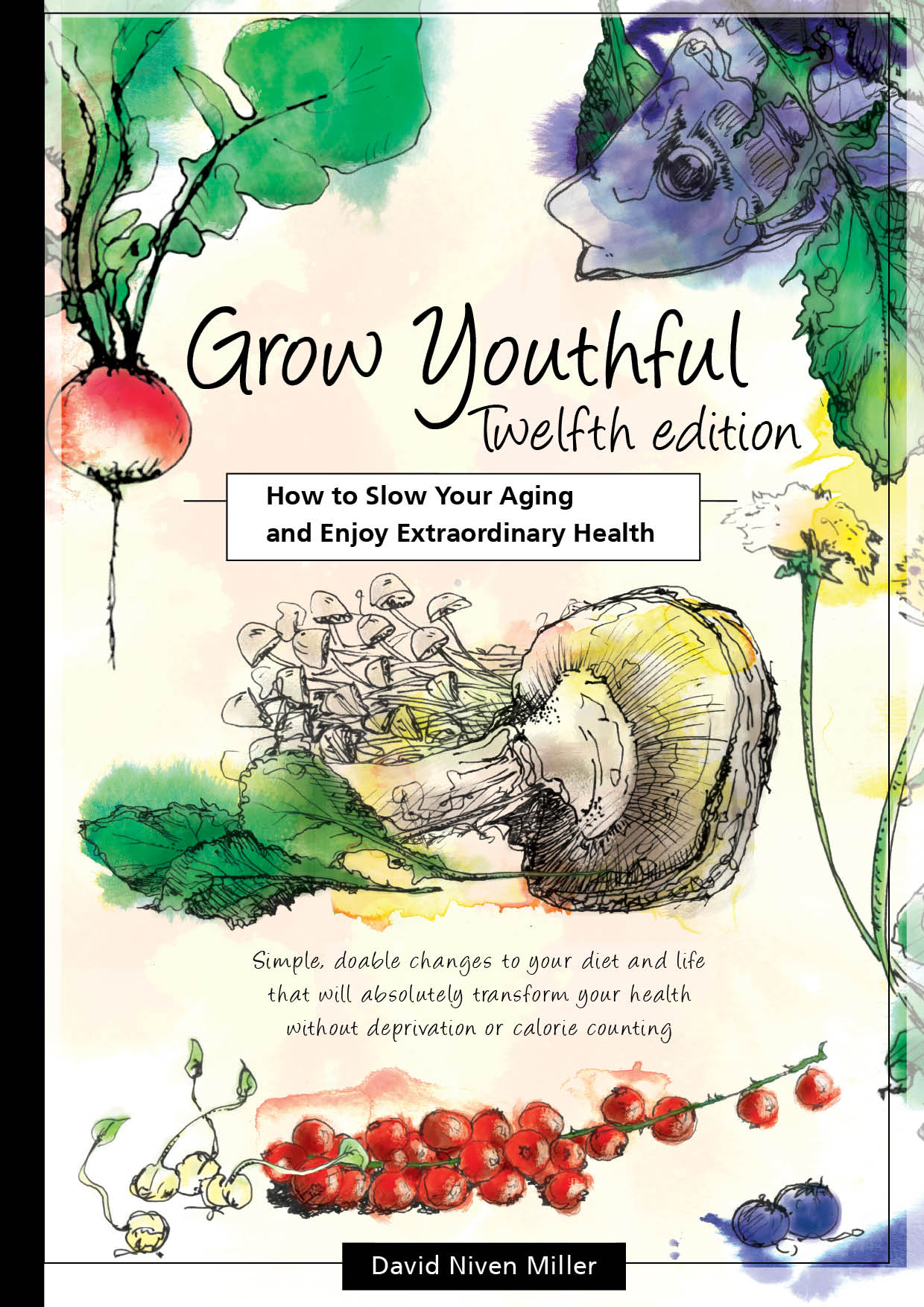
Progesterone
What is progesterone?
Sources of progesterone
Progesterone in women
Progesterone in men
How to use natural progesterone cream
References
What is progesterone?
Progesterone is a hormone found in men, women and children. Everyone needs a small amount of progesterone for good health and longevity. Women of reproductive age need (and produce) the most. Progesterone plays an essential role in a woman's reproductive cycle and her ability to have children, and if she does not produce enough and has low progesterone many serious problems can occur.
Men also need progesterone for good health and full sexual function. It should be the first hormone that men (and women) use to treat any problems caused by a deficiency or imbalance of sex hormones.

Postmenopausal women and children tend to have the lowest progesterone level and often have a progesterone deficiency. Adult males have a similar progesterone level to that in women during the follicular phase of their menstrual cycle. When a woman ovulates, the level of progesterone in her blood more than doubles. During pregnancy, her progesterone level goes up by one to two hundred times.

Progesterone is not a "feminising" hormone. That reputation belongs to estrogen. Excess estrogen or estrogen-imitators (including many pollutants in the environment) cause a variety of health problems for both men and women. Progesterone is a natural antagonist to estrogen. Progesterone helps to balance and neutralise the powerful effects of excess estrogen in both men and women. Without sufficient progesterone in the body, estrogen becomes harmful and out of control (unopposed estrogen or estrogen dominance).
Progesterone is produced in a woman's body in quantities a thousand-fold greater than estrogens. Progesterone is a pivotal building block for the production of other hormones, including estrogens, glucocorticoids and corticosteroids. Without progesterone there would be no menstrual cycle or reproduction. Progesterone plays an essential role including keeping the stimulatory effects of estrogen under control.
In the 1990's an American medical doctor, John R. Lee, pioneered the use of natural progesterone in treating breast cancer, PMS and menstrual problems. Dr Lee emphasised the use of natural progesterone with its dynamic and holistic properties, and warned doctors to avoid synthetic progesterone look-alikes or analogs, because they were not as effective and have nasty side-effects. Unfortunately many doctors are not aware of this important distinction. Pharmaceutical companies promote only their more profitable patented look-alikes. The best-known look-alikes are various progestins and progestogens.
Progesterone is the only hormone that does not adversely affect infants and children. So if you are using natural progesterone cream there is no need to worry about any rubbing off onto a male or female baby or child - no harm will come. However, synthetic pharmaceutical progesterone look-alikes, testosterone, estrogen and other hormones can cause serious side effects in children.
Sources of progesterone
- Small amounts of progesterone are produced by men's, women's and children's adrenal glands.
- Progesterone is made in men's testes.
- Progesterone is produced by the corpus luteum in a woman's ovaries after ovulation.
- At about 8 to 10 weeks of pregnancy, large amounts of progesterone are produced in the placenta.
- Today, progesterone is mostly made from sigmasterol sourced from soy beans. Smaller quantities of diosgenin from yams and other plants in the tuber family are also used as a raw material. No plants contain progesterone - the steroid substrates (raw materials) in these plants have to be converted into real progesterone in a laboratory.
- Dairy products contain progesterone, because on dairy farms cows and other animals are milked during pregnancy (when the progesterone content of their milk is high).
- Progesterone used to be harvested from animal ovaries or human placentas. These sources were limited, expensive, and subject to the health of the donors.
- The human body cannot convert the diosgenin or sigmasterol from raw, unprocessed plants into progesterone. This is a point that is avoided or misrepresented by marketers of wild yam products.
- Synthetic progesterone look-alikes or analogs. These look-alikes are favourites of the pharmaceutical companies, because they are not naturally-occurring and can therefore be patented. The best-known analogs are a variety of progestins, though there are others in the progestogen family. Many doctors are not aware of this crucial difference between natural or bio-identical progesterone and the patented look-alikes. These pharmaceutical look-alikes are not nearly as effective as real progesterone, and come with nasty and serious side-effects. (22) These altered progesterone look-alikes occupy the same receptors as real progesterone, but they act differently. They are also difficult to metabolise and excrete. Side-effects of the progesterone look-alikes include going blind, birth defects, asthma, embolisms, epilepsy, fluid retention, migraines, depression, renal dysfunction, cardiac dysfunction.
Progesterone in women

Symptoms of low progesterone in women
Benefits of natural progesterone supplementation for women
How to supplement with natural progesterone cream for women
Symptoms of low progesterone in women
Here are the kind of comments that women with progesterone deficiency are making to their partners, friends and doctors:
"I'm just too tired for sex"
"I sleep for 9 hours and still need more"
"Forget the sex, I just wish I had some energy"
"I love him, but I just don't have the energy for sex"
"It's all too much, I don't want to go out tonight"
"My drive and motivation have disappeared"
- Mood changes, anxiety, nervousness, irrational fears, irritability.
- Depression.
- Headaches, migraines.
- Hot flushes (also known as hot flashes or night sweats if they occur at night).
- Low sex drive / libido.
- Menstrual problems such as irregularity or heavy bleeding.
- PMS.
- Menopause and peri-menopause problems.
- Breast disorders, pain, tenderness.
- Endometriosis.
- Pyroluria.
- polycystic ovary syndrome (PCOS).
- Postpartum depression.
- Weight gain.
- Infertility.
- Miscarriage.

Benefits of natural progesterone supplementation for women
- Helps with the common symptoms of menopause including hot flushes, mood swings, insomnia, night sweats, vaginal dryness and restlessness. Estrogen levels normally fall by 40-60% during menopause, but progesterone levels often fall to almost zero. Menopause is not an estrogen-deficiency disease. The symptoms experienced by menopausal women are actually the symptoms of estrogen dominance! The most effective and safe treatment of these menopause symptoms is to counteract the excess estrogens by using a natural progesterone cream.
- Relief from PMS symptoms that you "just had to put up with".
- Heavy menstrual bleeding. Using natural progesterone during the luteal phase of the cycle will usually regulate and control bleeding within two or three months. It is important that uncontrolled bleeding be fully investigated by a gynaecologist to exclude serious underlying uterine disease.
- Restores libido/sex drive and function such as lubrication.
- Energy levels restored. An end to that unexplained fatigue.
- Helps to burn body fat for energy. Helps to control one important pathway in weight gain.
- Normalises insulin blood sugar control. Helps to stabilise blood sugar levels, and control craving for high-sugar and sweet foods such as chocolate. Anyone not experienced chocolate cravings during PMS?
- Anti-depressant. Depression is on the increase, with women suffering more than men. Progesterone is the raw material for the anti-stress hormone dopamine. Sometimes depression is also caused by low blood sugar (hypoglycaemia).
- Anxiolytic. Progesterone reduces anxiety.
- Stimulates bone growth, protecting against osteoporosis. It also protects against arthritis, and as an anti-inflammatory, reduces arthritic pain.
- Maintains the uterine lining during the second half of the menstrual cycle (the luteal phase).
- Assists the thyroid. Progesterone therapy helps to restore normal thyroid hormone action.
- Pregnancy. Helps avoid early miscarriage (propagates an embryo). Sufficient progesterone is vital during pregnancy. Especially if you are estrogen-dominant and progesterone-deficient, supplementing with natural progesterone can help you get and stay pregnant through to a healthy delivery.
- Protects against ovarian, endometrial and breast cancers.
- Protects against fibrocysts, uterine fibroids and endometriosis.
- Progesterone is used for building other hormones. In particular, the adult female body can make its own testosterone from progesterone. This is safer, avoids all risk of testosterone overdose, and avoids the risk of side-effects from testosterone supplementation. However, your body can only use real progesterone. It is not able to use synthetic pharmaceutical progesterone look-alikes such as progestin and progestogen. To repeat, if you use an altered progesterone lookalike it will NOT correct your testosterone level. Pharmaceutical companies deliberately name their products with confusingly similar names, and have successfully duped most doctors. For this reason, most doctors are unaware of how easy it is to correct a woman's testosterone levels by using (real) progesterone.
- Normalises blood clotting.
- Progesterone is a diuretic, normalising body fluid and salt levels.
- Heart disease - reduces blood clotting, reduces stress / better sleep, reduces high blood pressure by acting as a natural diuretic, improves the integrity and function of cell membranes.
How to supplement with natural progesterone cream for women

- Firstly, please use enough progesterone cream to reverse your symptoms. So many women use too little and it merely exacerbates them. The amount of progesterone to use is not dependent on your weight, size, height or age, but on your symptoms. The number of different instructions from different sources, the different creams and potencies, the apparent complications of using them, and the misinformation, has caused many hundreds of women to abandon using it.
- For general use and to reverse mild symptoms 100-200mg progesterone per day is needed.
For severe symptoms 400-500mg per day is needed. - Heavy, continual bleeding. Use 400-600mg per day continually for 1 to 3 months, ignoring your cycle. It is best to apply the cream hourly. When your bleeding is back to normal, slowly reduce the cream until bleeding occurs again, and then stop using the cream for 14 days. On day 15 start using the cream again for 14 days. Over the next few months the natural cycle length should return.
- Peri-menopause, post menopause, hysterectomy, oophorectomy. When there is no menstrual cycle or it is highly erratic, use 100-200mg or more per day depending on how severe your symptoms are. Continue to use the cream during the erratic bleeding.
- Severe hot flushes. Use at least 400mg per day, divided into in hourly doses. This usually gets them under control.
- Low libido / sexual function. Use 100-200mg per day, depending on symptoms. More if symptoms are severe.
- The contraceptive pill and hormone replacement therapies (HRT) both contain estrogen and synthetic progesterone, the most common being 'progestin'. Progestins have a molecule similar to real progesterone and cause natural progesterone levels to drop, leading to many of the above symptoms. If you are on the contraceptive pill or HRT and you wish to come off, it's far gentler on the body to do this gradually whilst at the same time using a natural progesterone cream.
- Menstruation. Women who are menstruating normally, with mild symptoms or symptoms that have resolved, can use 100-200mg of cream per day from the start of ovulation for the next 14 days. Bleeding should start a day or two after the cream is started. You may need to use more, depending on your symptoms and severity. If symptoms return during the break, then continue applying the cream twice a day or more frequently until they resolve.
- Maintenance dose. After your symptoms have passed the amount should be reduced very slowly over at least a few weeks. After a few months you will find an optimum dose that prevents your adverse symptoms returning and on which you feel good.
Progesterone in men
Progesterone and estrogen in men
Symptoms of estrogen dominance / low progesterone in men
Benefits of natural progesterone supplementation for men
How to supplement with natural progesterone cream for men
Progesterone and estrogen in men
Progesterone is known as the "source hormone" and gets converted in the male body into testosterone and other hormones. As men age, their progesterone level drops. This causes testosterone production to fall, and is one reason why older men may have a low testosterone level.

The level of estrogens, estrogen look-alikes and xenoestrogens rises in men's (and women's) bodies as the years go by. Progesterone opposes and balances excess estrogen (and xenoestrogens). It is progesterone that inhibits the harmful effects of too much estrogen (unopposed estrogen) more than anything else. So as estrogen levels rise in older men, there is no parallel rise in progesterone to balance this. A slight hormonal imbalance becomes a major imbalance - fast.
For men progesterone is anti-feminizing rather than being a "female hormone". Any adult man showing these estrogen-dominant symptoms, especially those over 50, should use a small amount of transdermal natural progesterone daily to offset the excess estrogens in his blood.
Progesterone is a powerful 5-alpha reductase inhibitor. 5-alpha reductase is an enzyme that turns beneficial testosterone into unwanted and dangerous dihydrotestosterone (DHT). High levels of DHT are associated with baldness, prostate disease, and a host of other illnesses as men age.
Progesterone raises the level of androstenedione in the prostate gland. A healthy prostate needs an abundance of androgens such as testosterone, androstenedione, and DHEA to function as well as it did in their youth.
A healthy prostate needs a small amount of progesterone, and actually has progesterone receptors. Studies on laboratory animals have reduced the weights of their prostates just by giving them natural progesterone.
Progesterone's safety for men is without question. It is now a standard treatment for traumatic brain injury, and over 70% of TBI victims are men. Progesterone is an excellent diuretic and anti-inflammatory, and its use via IV transfusion for brain trauma victims prevents oedema and inflammation that occurs after TBI injury. (24)
Symptoms of estrogen dominance / low progesterone in men
- Prostate enlargement - benign prostate hyperplasia / hypertrophy (BPH) and the risk of prostate cancer.
- Urination - difficulty, increased frequency. Constricted urethra.
- Erectile dysfunction.
- Low libido.
- Fatigue.
- Depression and anxiety.
- Adiposity (fat build-up) and the redistribution of fat.
- Muscle development reduced.
- Body hair reduced.
- Veins become less prominent.
- Baldness.
- Breast growth.
- Risk of many other cancers.
- Risk of heart and artery diseases.
- Sweat and body odour changes.
- Skin thinning.

Benefits of natural progesterone supplementation for men
Natural progesterone helps combat or even reverse the symptoms of estrogen dominance in men. As progesterone is a precursor hormone for testosterone, it is increasingly becoming the hormone used to treat prostrate problems and other male hormone imbalance symptoms.
- Protects against prostate problems. Urination is easier, stronger flow, less frequent. Bio-identical or natural progesterone is increasingly being used as an alternative to prostate surgery. There is substantial anecdotal evidence indicating that it can reduce an enlarged prostate back to normal.
- Improved libido and sex drive.
- Improved energy level.
- Feeling of wellbeing, happiness. Natural progesterone is a natural antidepressant and anxiolytic (reduces anxiety).
- Combats the build-up and redistribution of fat.
- Muscle bulk and tone improved.
- Baldness. Loss of hair on the scalp and all over the body is stopped or even reversed.
- Reduced / reversed breast growth.
- Reduced risk of prostate cancer and many other cancers. Some cases of prostate cancer have responded positively to progesterone. Who wants to go under the surgeons knife if they don't have to?
- Reduced risk of heart conditions.
- Improved sweat and body odour.
- Stronger, more resilient, younger skin.
More and more men are putting stigma aside and embracing this natural alternative.
How to supplement with natural progesterone cream for men
- Men should use 10-100mg per day. This is suitable to treat symptoms of low progesterone, symptoms of low testosterone, or more commonly, symptoms of estrogen dominance caused by xenoestrogens. Vary the dose depending on the severity of the symptoms. The amount of progesterone to use is not dependent on your weight, size, height or age, but on your symptoms.
- If you are treating symptoms of estrogen dominance caused by xenoestrogens, remember to start with a sufficiently high dose, and persevere if the symptoms of estrogen dominance appear or get worse during the first few days.
- Maintenance dose. After your symptoms of estrogen overload have passed the amount of progesterone cream you use should be reduced very slowly over at least a few weeks. After a few months you will find the optimum dose that prevents your adverse symptoms returning and on which you feel good. Your maintenance will depend on your particular situation, symptoms, and level of xenoestrogen build-up.
How to use natural progesterone cream
Here are some tips on effective use of progesterone cream for both men and women.
- Use a natural progesterone skin cream, not drops or pills. Progesterone is poorly absorbed when taken orally, being broken down by the liver and gut and excreted instead of being bio-available for use in the body. 95% of progesterone taken orally as tablets or drops is lost. (23) Progesterone is well absorbed transdermally (through the skin), and using it as a cream on the skin is the most effective method to take it.
- The quantities of progesterone cream shown on this Grow Youthful web page are based on a concentration of 3.33% progesterone.
- As a natural product progesterone is not a "quick fix" solution. It took years for most people to get out of balance, and although supplementing with progesterone will show results quicker than this, it can still take from one to six months or even longer, PROVIDED that you use a sufficient quantity at least twice a day.
- 13 hours after applying progesterone cream to the skin your progesterone level starts to drop, so it should be applied at least twice a day.
- Over a period of time progesterone will gradually become the dominant hormone instead of estrogen. As this happens your symptoms will ease.
- In some cases, people who start using progesterone initially experience an increase in their symptoms. This usually occurs when they have a high level of estrogen, estrogen look-alikes, or toxic xenoestrogens in their body. This is explained in estrogen dominance. The key to avoiding an increase in your symptoms is to use sufficient progesterone initially, do not cut back. This applies to both men and women. So if any symptoms like hot flushes or night sweats appear, please persevere with high doses of the progesterone cream and these symptoms should clear up within a few days, usually less than a week.
Starting with a low level (less than 200mg per day for women, less than 20mg per day for men) may aggravate your symptoms, so try to use a higher dose in the beginning then slowly reduce down to a level that suits you. People who suffer from a high level of estrogen dominance or toxic xenoestrogen build-up in their bodies need to start supplementing with progesterone at a higher dose. - Reducing your dosage. When your symptoms have disappeared or improved, you can slowly start to reduce the amount of cream you use. It is essential to do this slowly. If you cut back too quickly, your symptoms will return. Should this happen, simply increase the amount of cream until you feel stable again.
It should take several weeks to reduce your dose, decreasing by no more than 15mg per day. Stay on the reduced amount for a few days before reducing again. - Vitamin D from sunlight. Get out in the sunshine. The advice to avoid sun is one of the greatest public health mistakes of the century. Your health care provider should monitor your vitamin D level and ensure that it is at least 70 ng/ml (175 nmol/L). If you can't get sufficient sunlight in the winter take 40,000 IU of vitamin D3 supplement and make sure to also take 500 mg to 1000 mg of magnesium (on the skin) and 150 mcg of vitamin K2 (not K1) per day. They are important cofactors for optimising vitamin D3 supplementation. A level of vitamin D lower than this will slow or prevent your body making its own progesterone, and low levels of progesterone also make its actions less effective. Getting a good level of vitamin D is often one of the keys to treating symptoms of low progesterone. Most people are vitamin D deficient, particularly during the dark gloomy days of winter. If your vitamin D level is low when you use progesterone you are not really giving it a chance, and you may (incorrectly) think that progesterone is ineffective.
- Chronic stress causes the progesterone level in your body to drop sharply, so symptoms can come back. When you start supplementing, it is a good idea to meditate, let go of your negative reactions to people and circumstances around you, and try to avoid stressful situations. If you are stressed, increase the amount of cream until you are over the stressful time, then slowly reduce back down again.
- Overeating. Large meals drop your progesterone level with an increased clearance rate of the hormone.

References
1. Anasti J. N, Leonetti H.B, Wilson K. J.
Topical progesterone creme has antiproliferative effect on estrange-stimulated endometrium.
Obstet & Gynecol. 2001. 94(4 Suppl.): 10S and Fertil Steril. 2004. 79 (1): 221-2.
2. Baulieu E., CSchumacher M.
Progesterone as a neuroactive neurosteroid, with special reference to the effect of progesterone on myelination.
Steroids. 2000. Oct-Nov; 65 (10-11): 605-12.
This paper reviews the effects of progesterone on the brain, with special focus on its role in the formation of the myelin sheath
surrounding nerve fibers. Other roles of progesterone in the brain include evaluating activating GABA receptors, which induces a
calming effect
3. Cowan L. D., Gordis L., Tonascia J. A., et al.
Breast cancer incidence in women with a history of progesterone deficiency.
American Journal of Epidemiology. 1981; 114:209.27
4. Dennerstein L., Spencer-Gardner C., Gotts G., Brown J. B., Smith M.A., Burrows G. D.
Progesterone and the premenstrual syndrome: a double blind crossover trial.
Br Med J (Clin Res Ed) 1985. Jun 1; 290 (6482): 1617-21.
5. Goodman & Gilman.
The Pharmacological Basis of Therapeutics.
6th edition, 1980: Chapter 61 (Estrogens and Progestins: 1420), 1085-1171
6. Lee, D. R. M.D.
Osteoporosis reversal: the role of progesterone.
Intern Clin Nutr Rev 10: 384-91. 1990.
7. Lee, D. R. M.D.
Is natural progesterone the missing link in osteoporosis prevention and treatment?
Medical Hypotheses 35:316-18. 1991.
8. Lee, D. R. M.D.
Natural Hormones for Men: What Your Doctor May Not Tell You About Prostate Health and Natural Hormone Supplementation.
Hormones Etc. p. 5-24. 2003.
9. Lee, John R.
Natural Progesterone - The Multiple Roles of a Remarkable Hormone.
1993.
10. Lee, John R.
What Your Doctor May Not Tell You About PREmenopause.
1999.
11. Lee, John R.
What Your Doctor May Not Tell You About Breast Cancer.
2002.
12. Lee, John R.
Hormone Balance for Men.
2003.
13. Lee, John R.
What Your Doctor May Not Tell You About Menopause.
2004.
14. Lee, John R.
Hormone Balance Made Simple.
2006.
15. Leonetti H.B., Longo S., Anasti J. N.
Transdermal progesterone cream for vasomotor symptoms and postmenopausal bone loss.
Obstet Gynecol 1990. Aug; 94(2): 225-8.
16. Mauvais-Jarivs P., Kuttenn F, Gompel A.
Antiestrogen action of progesterone in breast tissue.
Horm Res. 1987. 28 (2-4): 212-8.28
17. Prior, J.C.
Progesterone as a bone-trophic hormone.
Endocr Rev 11:386-98. 1990.
18. Prior, J.C., Y. M. Vigna, and N. Alojado.
Progesterone and the prevention of osteoporosis.
Candian Journal of Obstetrics/Gynecology & Women's Health Care 3:178-84. 1991.
19. Rylance P. B., Brincat M., Lafferty K., De Trafford J. C., Brincat S., Parsons V., Studd J. W.
Natural Progesterone and antihypertensive action.
Br Med J (Clinical Res Ed) 1985. Jan 5; 290 (6461): 13-4.
20. Stevenson, J. C., K. F. Ganger, et al.
Effects of transdermal versus oral hormone replacement therapy on bone density in spine and proximal femur in postmenopausal
women.
Lancet 336: 256-26. 1990.
21. Sherwin B. B.
Progesterone use in menopause. Side-effects, mood and quality of life.
J. Reprod Med. Feb; 44(2 Suppl): 227-32. 1999.
22. Kent Holtorf.
Bio-identical vs synthetic hormones.
Postgraduate Medicine, Volume 121, issue 1, January 2009, issn - 0032-5481, e-issn - 1941-9260 9.
23. Parr RA, Davis IF, Miles MA, Squires TJ.
Liver blood flow and metabolic clearance rate of progesterone in sheep.
Res Vet Sci. 1993 Nov;55(3):311-6.
24. Janet Christenbury.
Progesterone Shows Promise as Treatment for Traumatic Brain Injury.
Emory University, Woodruff Health Sciences Center, 2 October 2006.
25. Jeffrey D. Blaustein.
Progesterone and Progestin Receptors in the Brain: The Neglected Ones.
Endocrinology June 1, 2008 vol. 149 no. 6 2737-2738.
26. Andersen ML, Bignotto M, Tufik S.
Hormone treatment facilitates penile erection in castrated rats after sleep deprivation and cocaine.
J Neuroendocrinol. 2004 Feb;16(2):154-9.
